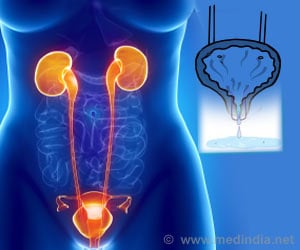Readmission rates have long been a trusted measure of effective and responsible care, but with skilled nursing facility networks, these rate can be reduced.

‘Hospital readmission rates have long been a trusted measure of effective and responsible care, but with skilled nursing facility networks, these rate can be reduced.’





Re-hospitalization rate for patients discharged to skilled nursing facilities declined from 24 percent in 2009 to 18 percent in 2013, compared with 21.5 percent to 20 percent for hospitals without skilled nursing facility networks. "The hospitals with formal networks of skilled nursing facilities recognize that care management among patients transitioning to a skilled nursing facility is just as important as managing patients discharged to home, particularly because the former are often sicker and have more complex health care needs," said John Mc Hugh, PhD, MBA, assistant professor of Health Policy and Management at the Mailman School of Public Health.
While there has been a steady decrease in re-hospitalization rates nationally, many of the reasons for these reductions had been unclear until this study.
The U.S. Centers for Medicare and Medicaid Services (CMS) has been focusing on reducing unplanned readmissions and established a penalty for hospitals beginning in 2012. Currently, the penalty is a 3 percent reduction in Medicare payments.
To determine changes in re-hospitalization rates and differences in practices, the researchers analyzed data gathered from interviews during site visits to hospitals in eight U.S. cities in March to October 2015 and combined this information with Medicare claims data for the period 2009 to 2013. Mc Hugh and colleagues identified four hospitals, representing two sites, that had developed a formal network of preferred nursing facilities.
Advertisement
Several overarching themes emerged from the study. For example, hospitals leveraged their existing relationships and built their preferred networks using facilities where they had historically discharged a high percentage of patients. "This is an important finding because it shows that hospitals were able to adhere to the choice requirements set by CMS and not have to diverge from historic referral patterns with their discharge planners," observed Mc Hugh.
Advertisement
The researchers also noted that certain cost drivers stimulated establishing a skilled network, hospitals were able to leverage high volumes at network facilities, and effective data management was critical. Each of the hospitals had a contractual relationship but no direct financial relationship with the preferred skilled nursing facilities in their network.
"The leadership teams of the hospitals with skilled nursing facility networks focused organizational efforts on developing these preferred networks," said McHugh. More specifically, the hospitals had formal processes in place to identify participating facilities and during the discharge process the hospitals often provided patients with printed materials about the network facilities available.
"We also learned that while nearly all hospitals had processes to manage patients discharged to home, only four had recognized the advantages of developing formal networks of skilled nursing facilities. Some had begun the process of developing networks, only to abandon it," noted McHugh. "It is important for hospitals to recognize the elevated re-hospitalization risk of patients discharged to these facilities. The costs associated with developing a network are relatively small, yet the benefits can be significant."
Source-Eurekalert










